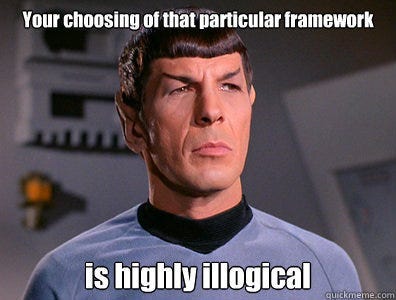Stop using frameworks
Frameworks can slow down your business and halt growth. How do you get away from canned frameworks and increase your impact?
If you look at the top browsed product management blogs, you’ll notice a striking similarity. Most are filled with frameworks and templates.
Top 10 RFD templates from Big-Tech. Discovery templates. Prioritization frameworks, etc. As if a template can fix the lack of discovery skill within an organization.
Managers are fascinated with frameworks. Often, they are idolized as silver bullets. “Product strategy canvas is going to make you great at strategy”. No, it won’t. What will likely happen is you will try to conform to the framework and stretch your existing knowledge to fit it.
I’d argue that most “imported” frameworks hurt business growth. Instead of nudging the team to think and solve problems, they force compliance. This compliance takes time and effort, generating substantial headcount cost.
Let’s break this problem down and understand why we fell in love with frameworks, why this is a temporary stage of product management, and what alternative modus operandi teams should seek? I’ll illustrate this with real cases examples that might make you rethink your current stance on frameworks.
Let’s dive in.
🤔 How have we ended here?
Real product management as we know it today sprouted in the 1990s in the US. Netscape, Microsoft, Yahoo. There wasn’t a defined scope for the role of a product manager back then. Reading Ben Horowitz's classic 1997 post might surprise you with how prevalent and different the role has become for certain companies.
After the dot.com bubble burst, companies became more pragmatic and sought answers. Agile and Kanban came to the rescue. The ambiguous role of a PM shrank to “backlog operations”. Strategy was defined by stakeholders, execution by product and engineering teams. This worked until most internet industries became saturated.
Then stakeholders challenged product managers to seek outcomes, not just outputs. Learning to deliver outcomes required revisiting forgotten skillsets. What is strategy? What is managing the business like?
These challenges required competencies most product managers didn’t have. Hence, they turned to frameworks. Nicely packaged templates promised to bridge the knowledge gap quickly.
In a way, a framework is like a magic pill promising fast results with little effort. As we know, except for the placebo/nocebo effects, magic pills don’t work.
❌ Why frameworks don’t work
Whatever framework you pick - it’s a set of condensed abstract ideas targeted to solve a specific problem.
This solution might have worked in the environment where it was created, but the likelihood that it’ll work for you is negligible for three main reasons:
Understanding of the problem
Contextual differences
Different eras
We can argue that certain problems can be generalized, like strategy. However, it’s such a misunderstood term that each company has its own definition. What might be labeled as a “strategy problem” might actually be a tactical prioritization issue.




